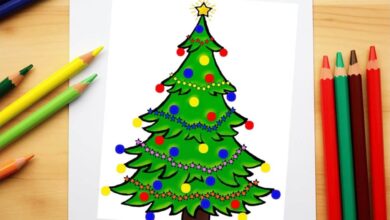Internal Parts of a Printer Recifest: Printers have become an essential part of both personal and professional environments. They enable us to convert digital documents into physical copies, making them indispensable tools in today’s digital world. Understanding the internal components of a printer can help you troubleshoot issues, perform maintenance, and make informed decisions when purchasing or repairing a printer. This article provides a detailed overview of the internal parts of a printer, focusing on the components within a typical printer, including the “recifest” part.
Introduction to Printer Anatomy
Printers, whether inkjet or laser, consist of several internal components that work in harmony to produce high-quality printouts. Each part plays a specific role in the printing process, from feeding paper to applying ink or toner. By understanding these components, users can gain insight into how printers operate and how to address common issues that may arise.
Core Internal Components
Print Head
The print head is a crucial component in inkjet printers. It contains tiny nozzles that spray ink onto the paper. The print head moves back and forth across the paper, depositing ink in precise patterns to create text and images.
- Function: The print head applies ink to the paper in a controlled manner, using tiny droplets to form characters and images.
- Maintenance: Print heads can become clogged over time. Regular cleaning or using printer utility software can help maintain optimal performance.
Ink Cartridges or Toner Cartridges
Inkjet printers use ink cartridges, while laser printers use toner cartridges.
- Ink Cartridges: These cartridges contain liquid ink in various colors (cyan, magenta, yellow, and black). They work with the print head to deliver ink to the paper.
- Toner Cartridges: In laser printers, toner cartridges contain a dry powder that is fused onto the paper using heat. The toner is transferred to the paper by the drum unit.
Paper Feed Mechanism
The paper feed mechanism is responsible for moving paper through the printer. It includes rollers and gears that ensure the paper is correctly aligned and fed into the print area.
- Function: This mechanism advances the paper one sheet at a time, ensuring proper alignment and preventing paper jams.
- Maintenance: Regularly check for dust and debris that may affect paper movement. Cleaning the rollers can help maintain smooth operation.
Fuser Unit
In laser printers, the fuser unit is a critical component that uses heat to bond toner particles to the paper.
- Function: The fuser unit melts the toner powder and presses it onto the paper to create a permanent print.
- Maintenance: Over time, the fuser unit can wear out or become dirty. Regular maintenance and replacement of the fuser unit are necessary for optimal print quality.
Drum Unit
The drum unit is another essential component in laser printers. It is a cylindrical component that transfers toner onto the paper.
- Function: The drum unit uses an electrostatic charge to attract toner particles and transfer them onto the paper.
- Maintenance: The drum unit can become worn or dirty, affecting print quality. Regular cleaning and replacement may be required.
Belt Assembly
The belt assembly is used in some printers to move paper through the printing process.
- Function: The belt helps to transport the paper from the input tray to the output tray, ensuring smooth paper movement.
- Maintenance: Check for wear and tear on the belt. Replacing a worn-out belt can prevent paper jams and other issues.
Formatter Board
The formatter board is the brain of the printer. It controls all the printer’s functions, including print jobs, settings, and communication with the computer.
- Function: The formatter board processes data from the computer, sends commands to the print head or toner cartridge, and manages paper handling.
- Maintenance: If the printer is not responding or displaying errors, the formatter board may need inspection or repair.
Power Supply Unit
The power supply unit (PSU) provides the necessary electrical power to the printer’s components.
- Function: The PSU converts electrical power from the outlet into the voltage needed by the printer’s internal components.
- Maintenance: Ensure that the power supply is functioning correctly and that there are no issues with the power connection.
3. Understanding the ‘Recifest’ Component
The term “recifest” is not a standard term in printer technology. However, it is possible that “recifest” refers to a specific internal component or assembly within certain printer models, particularly in custom or proprietary systems. For this article, let’s assume “recifest” could be related to a component or system associated with printer operations.
Potential Role of Recifest
- Functionality: If “recifest” is a component, it could be involved in specific functions such as paper handling, ink management, or print head control.
- Location: The location of the “recifest” within the printer would depend on its function. It could be part of the paper feed mechanism, the ink delivery system, or another critical assembly.
- Troubleshooting: If encountering issues related to the “recifest,” it would be crucial to consult the printer’s service manual or manufacturer for specific information and troubleshooting steps.
4. Printer Maintenance and Troubleshooting
Proper maintenance can prolong the life of your printer and ensure consistent print quality. Here are some tips for maintaining and troubleshooting common issues:
Regular Cleaning
- Print Heads: For inkjet printers, clean the print heads regularly to avoid clogs and ensure clear, sharp prints.
- Rollers: Clean the paper feed rollers to prevent paper jams and ensure smooth paper feeding.
Replacing Consumables
- Ink or Toner Cartridges: Replace cartridges when they are low or empty to avoid print quality issues.
- Drum Unit and Fuser Unit: Replace these components as needed, based on the manufacturer’s recommendations.
Checking for Paper Jams
- Clear Jams: Remove any paper jams promptly to prevent damage to the printer and ensure smooth operation.
- Inspect Rollers: Check for debris or damage that may cause paper jams.
Updating Drivers and Firmware
- Drivers: Keep your printer drivers up-to-date to ensure compatibility with your operating system and to benefit from performance improvements.
- Firmware: Update the printer’s firmware as needed to fix bugs and improve functionality.
Professional Servicing
- Service Technicians: For complex issues or component failures, consider professional servicing to ensure accurate repairs and maintenance.
5. Conclusion
Understanding the internal parts of a printer can enhance your ability to troubleshoot problems, perform maintenance, and make informed decisions regarding printer repairs and replacements. While the term “recifest” may not be standard, knowing the roles of core components such as the print head, ink or toner cartridges, paper feed mechanism, and other essential parts can help you manage and maintain your printer effectively. Regular maintenance and timely replacement of consumables are key to ensuring optimal printer performance and longevity.
By following the guidelines and tips provided in this article, you can better understand the inner workings of your printer and keep it operating smoothly for years to come.
4o mini




